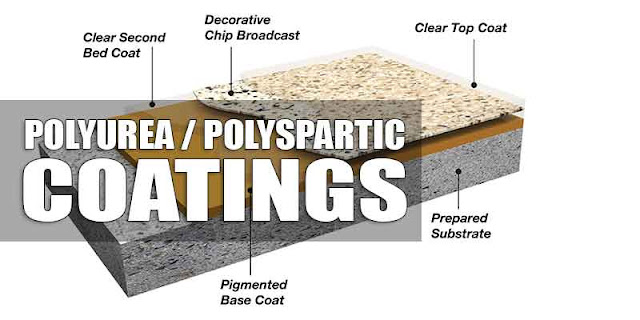Question: What is the difference between a polyurethane and polyurea?
Answer: Polyurethanes and polyureas both cure to systems that can vary from set to very soft solids in their definitive properties. The two are quite alike, but with some apparent discrepancies. While polyurethanes have been used for many years, polyureas are moderately new to the industry. From a chemical standpoint, a polyurethane is made from the reaction of an isocyanate with a polyol, whereas a polyurea forms from an isocyanate reacting with a multifunctional amine. It is also reasonably easy to create so-called “hybrid” systems, in which the isocyanate is reacted with a mixture of hydroxyl and amino groups.
The most significant difference is that the polyurea reaction is much quicker than the polyurethane one, and the systems can gel within a few seconds after mixing. Polyureas have been used very successfully in the coatings industry, where the two components are combined using plural spray equipment; polyurea adhesives, however, are relatively new.
One issue has been that the adhesives gel so quickly that the liquid does not have time to spread and wet the bonding surface. Also, heat-sensitive substrates can get damaged by the strong exotherm produced from the fast curing. However, slowing down the curing is possible and has led to successful applications (e.g., high-speed wood bonding). Polyurea also leads to new bonding possibilities where they can be used like a spot weld, and there is a possible technique in which parts are preassembled and the polyurea is injected into the bond line through preformed grooves.

